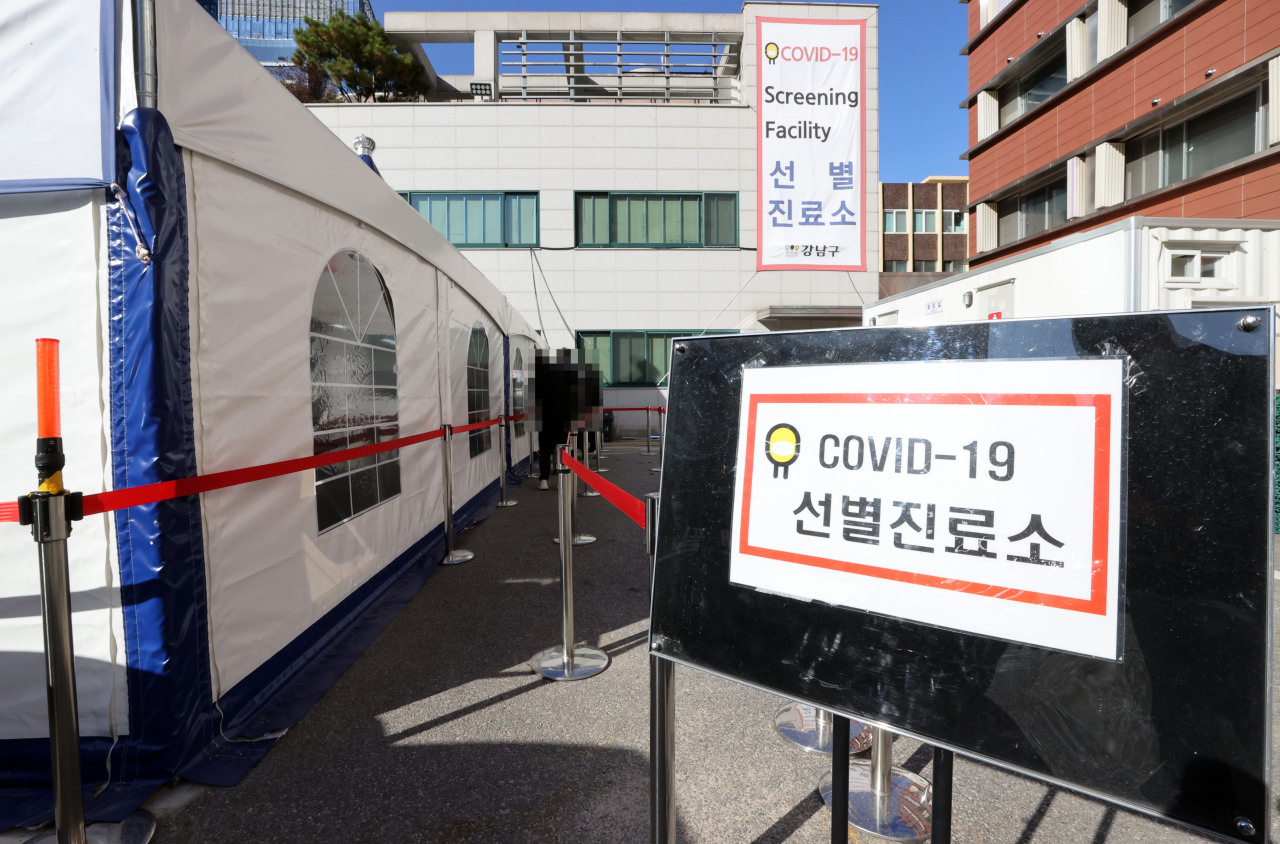
South Korea’s public health office said Wednesday that while the coronavirus situation here does not yet call for reverting to tighter restrictions, factors such as lagging contact tracing and winter posed potential challenges.
Korea on Tuesday carried out 12,401 tests and confirmed 118 more cases of the novel coronavirus -- 98 local and 20 imported -- according to the Korea Disease Control and Prevention Agency’s updates. The cumulative number of official cases is 26,925.
“Local outbreaks continue to climb with Seoul as the epicenter,” said senior health official Yoon Tae-ho in a briefing. Out of the 98 local cases identified Tuesday, 84 were in the capital area. Seoul and nearby Incheon and Gyeonggi Province now account for 47.3 percent of the nationwide total.
He added that the spread of the coronavirus was outpacing containment efforts by public health authorities.
“The infections are spreading faster than contact tracing,” he said. “The numbers are fluctuating, sometimes falling into the double digits. But if the growth of outbreaks keeps up at the current rate, the average locally transmitted infections will likely rise above 100.”
Under the new guidance, a daily case count of 100 or higher for a week is grounds for moving up to the second level of vigilance in the five-tier system of social distancing. Since Oct. 12, Korea has had the least restrictive level in place, permitting social gatherings of all sizes.
Still, the authorities strongly advised against socializing in person and mingling in indoor settings.
“To allow the economy to stay open and normal activities to resume, maintaining the lowest tier without the outbreaks getting out of hand is best,” Yoon said.
The way the coronavirus has crept into everyday life is making surveillance and containment increasingly challenging, said the Health Ministry’s spokesperson Son Young-rae in the same briefing. Frequently identified sites of infection clusters include restaurants, cafes, bars and classrooms.
“This is why public compliance with preventive measures such as wearing face masks and washing hands is so important.”
The approaching winter was also feared to make the pandemic worse.
“The chilly temperatures force people to congregate inside, creating an environment more conducive to spread,” he said. “But if we take adequate precautions as we carry on with our day, we can protect ourselves as well as others from the threat of infection.”
There are 53 severely or critically ill patients in the country as of the latest count. Only 61 out of 403 critical care beds in the country were available as of Tuesday. Last month, the Health Ministry revised the case definition of severe illness so that requiring an oxygen mask alone is not sufficient to be included.
Two more people died in the past day, putting the number of deaths at 474 and the fatality rate at 1.76 percent. The infection is much deadlier for people aged 80 or older, killing nearly 1 in 5.
The number of recoveries reached 24,616, up 106 from the day before. Asymptomatic individuals who remain without symptoms for 10 consecutive days after testing positive are discharged from isolation.
By Kim Arin (arin@heraldcorp.com)










![[Hello India] Hyundai Motor vows to boost 'clean mobility' in India](http://res.heraldm.com/phpwas/restmb_idxmake.php?idx=644&simg=/content/image/2024/04/25/20240425050672_0.jpg&u=)








